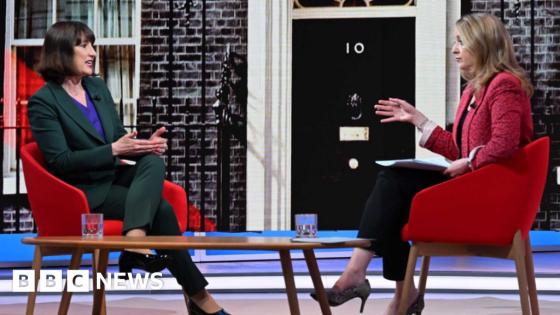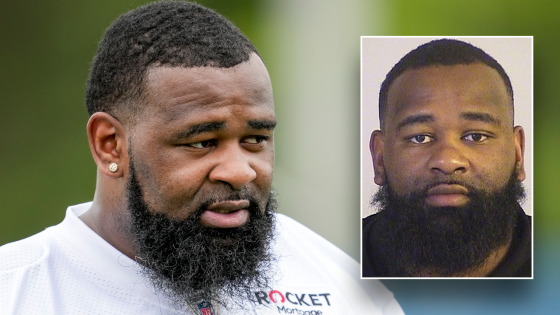Lionel Messi has been kicked and clobbered, twisted and tackled, bruised and battered thousands of times throughout his career, and nearly every time, after wincing and writhing, then walking off a field, soccer’s rules have eagerly welcomed him back to battle.
He has been treated by trainers in Spain and South America. He has limped to sidelines on four different continents. Whenever he’s ready, referees have waved him back onto the pitch, as per standard protocol.
But on Saturday night in Montreal, after being fouled, Messi hobbled straight into the mouth of a mold-breaking new rule in Major League Soccer.
It kept him sidelined for the next two minutes, and as he waited, watching his Inter Miami team play 10-v-11, he turned toward a field-side camera and microphone, visibly frustrated. “With this type of rule,” he said in Spanish, roughly, “we’re going in a bad direction.”
The rule, though, is already serving its intended purpose.
MLS devised it because, for decades, in hundreds of leagues worldwide, players have been abusing the standard protocol to waste time. They’ve exaggerated or feigned injuries when leading by a goal or two. They’ve swallowed up precious minutes by devious means, with no repercussions. They were, apparently, a reason that the average MLS game featured more than five injury-related stoppages of 15-plus seconds — even though only 8% of those stoppages resulted in a substitution.
The league’s answer: A so-called “off-field treatment rule,” which, with a few exceptions, states that “if … [a] player remains on the ground for more than 15 seconds and the medical staff enters the field of play, the player may be required to leave the field of play for two minutes.”
The early result: Less than two such stoppages per game since the rule’s April 20 implementation — 1.77 over the first three weeks, down from around 5.25 previously, according to league data.
The data, however, did not subdue an eruption of discourse and criticism once Messi voiced his opinion. Some of the criticism echoed prior concerns expressed by coaches. Saturday’s incident seemed to spotlight a rule-making oversight and an unfortunate side effect.
“The team that suffered the foul was punished,” Miami head coach Tata Martino said postgame. “With these new rule changes, there are situations that must be revised.”
Off-field treatment rule working as intended
The rules first took shape in 2022, when an MLS “on-field innovation committee” took aim at the bane of soccer purists, time-wasting. After extensive consultation — with referees and owners, with sporting directors and “medical folks” — league officials refined two semi-revolutionary ideas to cure the disease.
One rule targeted substitutions — a player must leave the field in 10 seconds when substituted, or else his replacement will have to wait 60 seconds to enter.
The other targeted injury simulation — and it was far more complicated.
“The objective,” MLS executive Ali Curtis said of both, was “to reduce preventable match delays and reduce gamesmanship.” But the off-field treatment rule required a lot of nuance, because real injuries are a very real part of soccer and often indistinguishable from fake ones.
So they built in certain exceptions, including for serious medical events. They decided to treat head and brain injuries separately. They chose to exempt any player on the receiving end of a foul that drew a yellow or red card. They also exempted goalkeepers.
In all of those cases, a player could reenter once medically cleared.
But in the rest, he’d have to either fight through pain or call for an athletic trainer and miss at least two minutes.
MLS piloted the rules in its reserve league, MLS Next Pro, in 2022 and 2023, and “felt really, really good about the [resulting] data,” Curtis said. According to that data, injury stoppages of 15-plus seconds fell from 6.0 per game without the rule in 2022 to 1.22 in 2023.
And of those 1.22, 1.04 were exceptions. Only 0.17 stoppages per game met the “off-field treatment rule” criteria — meaning players were only forced to sit for two minutes about once every six matches. In MLS, through three weeks, the equivalent rate was very similar: 0.16.
And the decrease in stoppages, it seems, was at least in part explained by less simulation. Prior to the rule, in MLS Next Pro, 8% of the stoppages in question led to a substitution. With most of those stoppages gone, the substitution rate rose to 38%.
Still, though, concerns have lingered. The rule offers players a clear incentive to play through pain, so as to avoid something akin to a hockey-style two-minute power play. It also can reward enforcers.
Curtis, speaking to reporters prior to the season, acknowledged those potential side effects. “One of the concerns we talked through was whether or not this would make the game more brutal,” he said. “Would a team deliberately try to injure an opponent in order to gain an advantage where they would be up a man?”
His answer then was the exception for yellow- and red-card fouls.
Part of the league’s answer now — implicitly, in data sent to Yahoo Sports on Sunday — is that foul and yellow card rates were actually lower in the first three weeks under the new rule than they were over the season’s first nine weeks, while red card rates were flat. (Part of the slight dip — from 25.88 fouls to 24.07, and 4.61 yellows to 4.38 — could be due to the switch from replacement refs to the league’s normal crews.)
MLS willing to innovate, and listen
The concerns, however, re-arose when Messi crumpled Saturday night and squirmed in pain. Montreal’s George Campbell had clattered into his leg in the 40th minute. Messi rolled twice, then clutched his knee, which had nearly hyperextended. He brought his forearm to his forehead. He hid his eyes and their agony. He threw his head back, and grimaced toward the sky. He was clearly hurt, not faking.
But referee Drew Fischer hadn’t shown Campbell a yellow card.
So, when Messi finally pulled himself to his feet, and reached the sideline, an assistant referee flashed two fingers to confirm: Messi, essentially, would be the one penalized.
This is an unintended and unseemly consequence of the rule. But it probably won’t deter MLS, because this is not a rule meant to accommodate players; it’s designed to accommodate fans and make games more watchable. It’s a tradeoff.
It’s also malleable. “Of course, if there’s an unintended consequence that we couldn’t foresee that had the perverse effect of jeopardizing player health and safety, for example, we have to immediately look at that,” MLS executive Nelson Rodriguez said prior to the season.
But they likely wouldn’t scrap the rule. A first step, at some point this year or next, could be a tweak or change. One simple amendment, for example, could have preempted the Messi scenario. No player in a regular-season match — with the possible exception of the season’s final day — would ever attempt to waste time while losing. So why should a team down two goals, as Miami was Saturday, be subject to the rule? Wouldn’t that be another sensible exemption, albeit an imperfect one?
Surely that will be considered. In general, league officials have signaled a willingness to innovate and change — and listen.
“It’s really trying to be thoughtful about the feedback that we receive, not just from fans, but also from players, from coaches, what’s happening in the sporting landscape,” Curtis said. “We try to be connected to all parts of the ecosystem, fans being one of them, so that we can continue to look at our game, and look at solutions.”
Source Agencies



